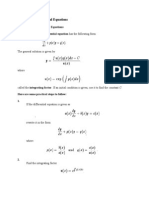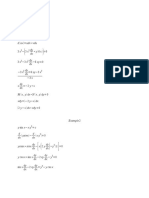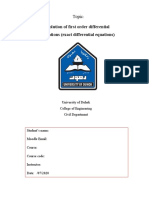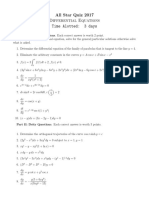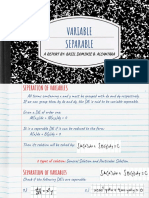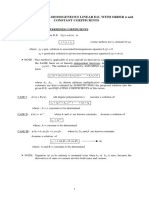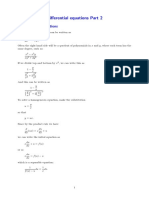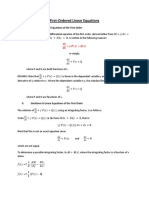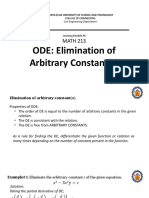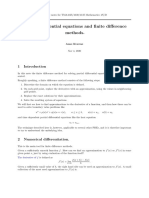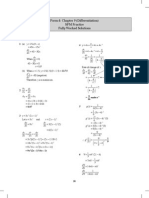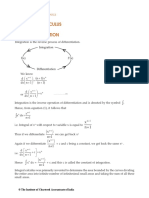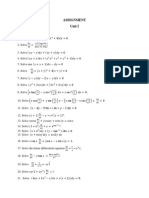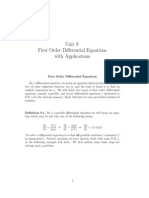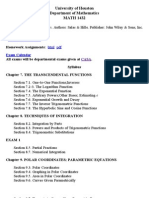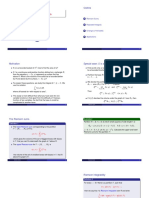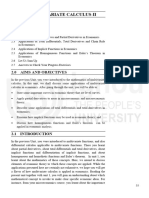0% found this document useful (0 votes)
218 views16 pagesChapter 3 Linear Differential Equation
1) A linear differential equation (LDE) is a differential equation that is linear in the unknown function and its derivatives.
2) To solve a nonhomogeneous LDE, one must obtain the integrating factor, which is used to derive the general solution formula.
3) The general solution formula for a nonhomogeneous LDE is: y × e∫Pdx = ∫Qe∫Pdx dx, where P and Q are coefficients in the original LDE.
Uploaded by
Christian Jay Miano BojosCopyright
© © All Rights Reserved
We take content rights seriously. If you suspect this is your content, claim it here.
Available Formats
Download as PDF, TXT or read online on Scribd
0% found this document useful (0 votes)
218 views16 pagesChapter 3 Linear Differential Equation
1) A linear differential equation (LDE) is a differential equation that is linear in the unknown function and its derivatives.
2) To solve a nonhomogeneous LDE, one must obtain the integrating factor, which is used to derive the general solution formula.
3) The general solution formula for a nonhomogeneous LDE is: y × e∫Pdx = ∫Qe∫Pdx dx, where P and Q are coefficients in the original LDE.
Uploaded by
Christian Jay Miano BojosCopyright
© © All Rights Reserved
We take content rights seriously. If you suspect this is your content, claim it here.
Available Formats
Download as PDF, TXT or read online on Scribd
/ 16












